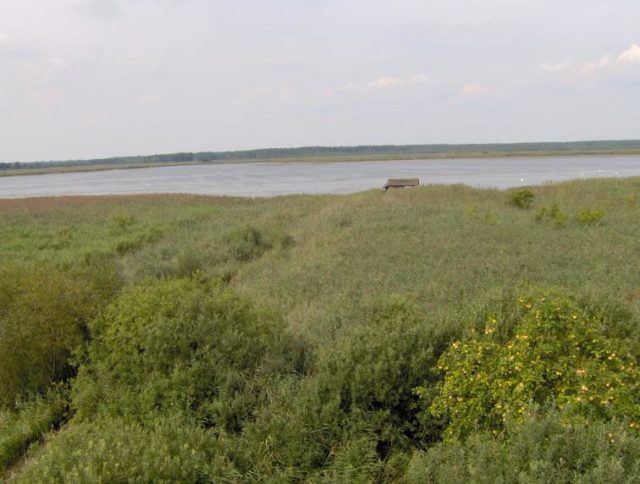Archaeologists have found indications of mysterious rituals performed by shamans around 9,000 years ago in north western Poland.
The site, located close to the modern day lake Świdwie, has been studied since the year of 2012. One of the most interesting findings within the area is of a circle with a diameter of about 6 m, where scientists found mysterious structures.

The primary feature located on the site was a trapezoidal structure with poles, enclosed by an arch of stones positioned at equal distance from each other.
There were also pointed yew sticks impaled into the surface in the form of a horizontal figure corresponding to the Big Dipper, a portion of the constellation known as the Ursa Major. This secretive place in Europe was possibly a sanctuary.
Archaeologists found a wooden censer, which was utilized for ritual smoking of the place, objects, and people in order to cast off atrocious spirits.
They would use a bundle of bark, herbaceous plants, wood, and animals bones, indicating to Prof. Galiński it should be understood as a shaman’s offering.
“Sacrificial offerings were an expression of belief in supernatural powers and forces of nature. Their purpose was to appease deities. They were made on behalf of all residents and members of the group with the participation of the spiritual leader,” Prof. Galinski said.
In the sanctuary, specialists discovered some large stones, and almost every one of them different. Amongst them were, gneiss, sandstone, quartzite, granite, diorite, syenite, and even uncommon green syenite, and Pormerania red marble. The discovery of black amber, pumice, and volcanic rock was a complete surprise and unknown to this region before.
“This extraordinarily rich collection of stones is unique among the previously known Mesolithic sites, located both within the vast European Plain, and in the zone of the foothills and highlands,” explained Prof. Galiński, in a press release.
These stones had to be brought to the site in Bolków, and not only from the surrounding area (…), but also from distant lands, the best example of which is hornfels, which occurs closest in the Giant Mountains and the Harz Mountains.”

Scattered within the sanctuary were several items crafted from wood, stone, and antler, such as an abnormally shaped cone, a wood pendant, and even an object created of birch bark, which is understood as a fragment of a ritual mask.
The artifacts within a sanctuary that were found in Bolkow have been preserved in excellent condition, the peat and sand aided in the artifacts preservation. The finding brings a new caliber of research into question on the culture of hunting communities from the Early Holocene on the European Manifest.
